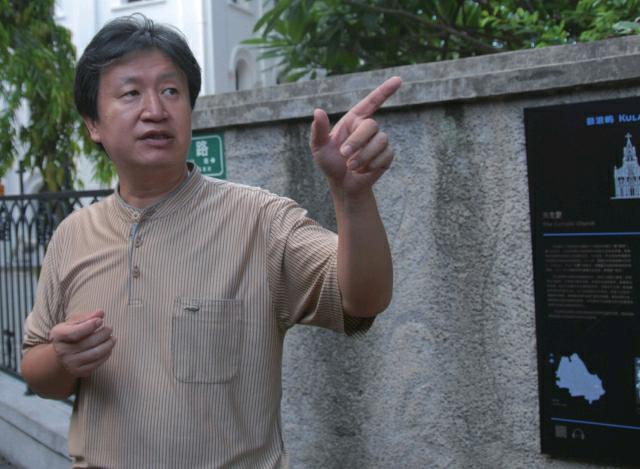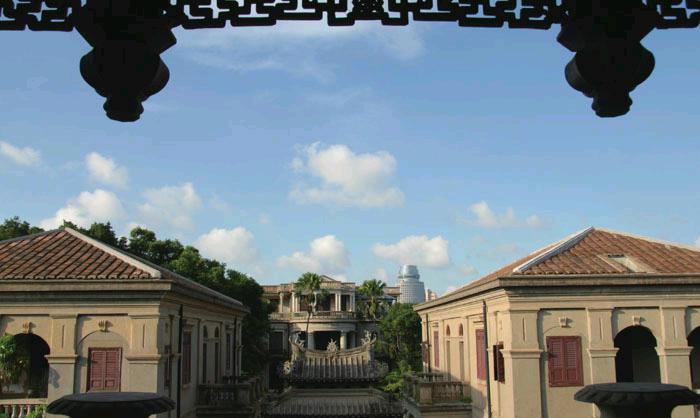LEGENDARY BUILDINGS
2017-08-03ByMaLi
By+Ma+Li
Kulangsu, a small pedestrian-only island in southeast Chinas Fujian Province, was included into the World Heritage List on July 8 for its complex of time-honored buildings, roads and landscapes.
The inclusion was made at the 41st session of the UNESCO World Heritage Committee held in Krakow, Poland. It is Chinas 52nd world heritage site on the list, making China the country with the most such sites in the world.
In its bid, Kulangsu listed 51 groups of representative historical buildings, four historical roads, seven representative natural landscapes and two representative cultural buildings. Alongside over 900 well-preserved historical buildings, gardens and a network of historical roads, they feature a unique architectural view of the small island.
Unique Xiamen style
Facing Xiamen, Kulangsu covers just 1.88 square km.
After the end of the First Opium War(1840-42), Xiamen was opened as a com- mercial port in 1843. More and more foreigners came to Kulangsu and settled down there. Thirteen countries, including Britain, the U.S., France, Germany and Japan, set up their consulates on the island. More than 1,200 villas have been constructed on this island since then and are like windows into Chinas modern history, demonstrating a mixture of Chinese and Western cultures.
The World Heritage Committees evaluation document says that “Kulangsu was Chinas major gateway in early-stage globalization and exhibited mixed architectural characteristics from the local, Southeast Asian and Western styles. It widely refl ected cross-border communication.”
“Infl uenced by various cultures throughout the world, Xiamen gradually formed its unique architectural style,” Wu Yongqi, a historian at the island, told Beijing Review.
Witnessing history
Hi Heaven is a villa complex constructed by Huang Xiulang and Huang Nianyi during 1920- 30. Composed of five villas, it occupies 6,500 square meters and was a key part of the bid for world cultural heritage recognition.
“The Hi Heaven villas are very famous at Kulangsu. They are a typical model that combines Western and Chinese cultural elements,” Wu said.
Wu said that one of the buildings, built in the 1870s, used to be a club for foreigners living on the island.
After Huang Xiulang bought it in the 1920s, he built a new villa next to the club with architectural drawings provided by the British. Following that, another three villas were built along the axis of the existing ones, making this complex the only one at Kulangsu that was constructed symmetrically.
“When the architectural experts from UNESCO came here to visit before the final bid, they couldnt categorize the architecture style here as it looks both Western and Chinese. They fi nally defi ned it as Xiamen style,” said Wu.
Huang Xiulang was born into a poor family from Jinjiang of Fujian in 1859 and later moved to the Philippines where he became a prominent businessman. In 1899, he returned to China and settled at Kulangsu. He opened a company in Xiamen, exchanging goods between the Philippines and Xiamen, and his business expanded quickly.
Integration of styles
Opposite to Hi Heaven is the Huangrongyuan Mansion, one of the 10 major villas at Kulangsu. It boasts porticos of various sizes, all craved from a whole block of granite in typical Spanish style.
“Even though it is an old building with a history of more than 100 years, it doesnt look outdated at all. This is the charm of the time-honored buildings,” Wu said.
The villa was constructed in 1910 by Shi Guangming, a famous fi gure both in the Philippines and Kulangsu in those days. He hosted many celebrities in this villa.
When Shis family later moved to the Philippines, the villa was transferred to Huang Zhongxun, a Chinese national living in France.
Huang made some renovations after taking over the villa and added another three floors to the villa, which originally had two floors. The roof had a zigzag shape, typical of French architecture. Wu said that Huang was not satisfied after the renovation and thought it still didnt look as tall as he wanted. He therefore dug a pit right in front of the villa. Visitors, before entering the villa, have to step into the pit fi rst. From the pit, the villa looks much taller.
“This is not a simple pit. Its guardrails are all in Western style, but it also combines many Chinese elements. Looking down the pit, we can see it is in the shape of a silver ingot, and thus is called cornucopia. A square hole was made in the middle of the pit and fi lled with water and fancy carp, signaling the constant fl ow of good fortune,” Wu said.
A pavilion in typical Vietnamese style is situated at the right of the third fl oor.
Wu hopes that people can learn the stories of the villas and their owners. “We are now exploring stories behind the aged buildings that are still not open to the public and these stories can help to bring the islands history alive again,” he said.
